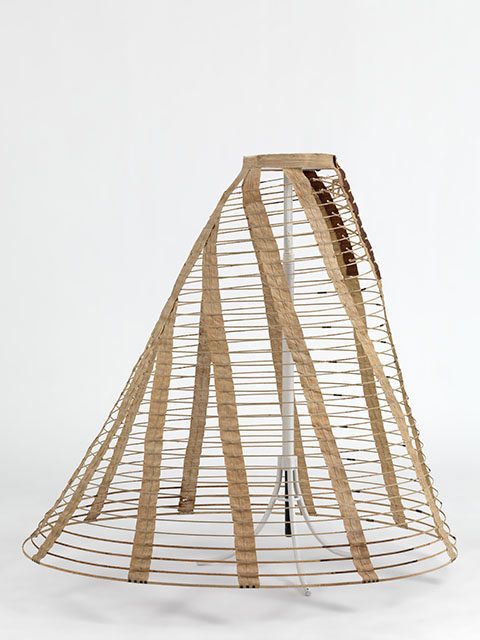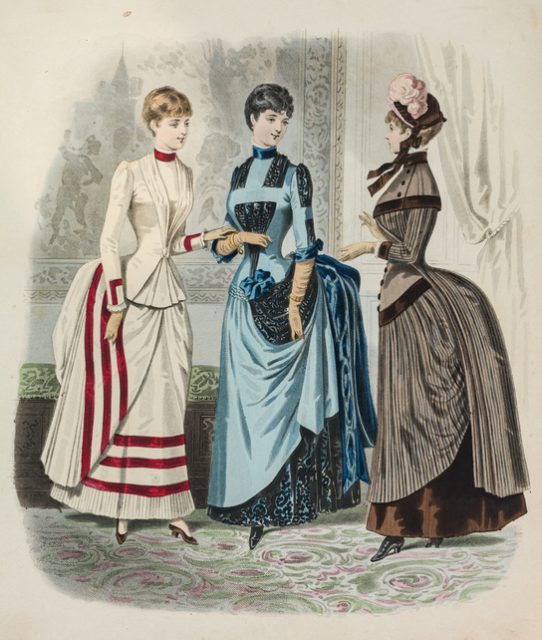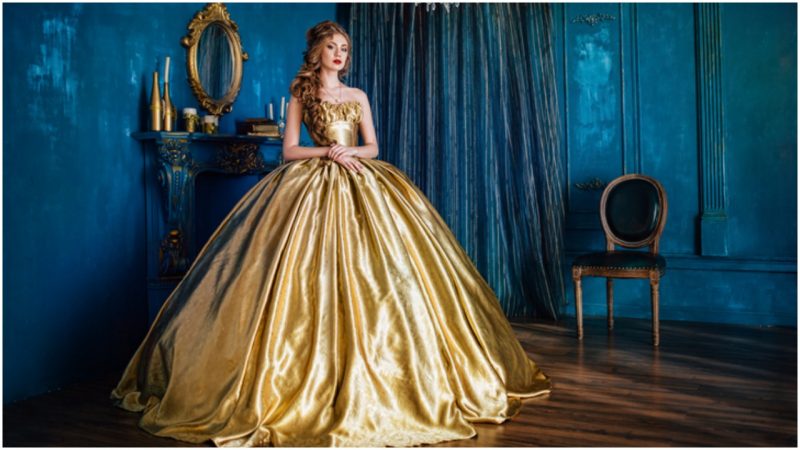Observed from today’s perspective, crinolines look utterly uncomfortable and unattractive to the point of absurdity. Why would anyone want to wear something that resembles a gigantic whipped-cream cake around their waist? Yet fashion trends have shown that comfort and attractiveness often have little in common, so it can be said that crinolines were just what any fad is–a way to get all eyes on you even if the cost is being a real (fashion) victim.
One of the fashion trends of the 19th century Victorian Era that stirred lady fashionistas was the so-called “Crinolinemania,” a craze that referred to the fashion obsession with the crinoline, a stiffened underskirt made using horsehair and linen or cotton, invented in the early 1840s.
These skirts were the followers of the “panniers” women’s underwear worn in the 17th and 18th centuries that enabled extending of the skirt at the side, thus creating a large side-squared dress that properly displayed the garment’s decorations.

However, according to some fashion historians, the real predecessor of the crinoline was the 16th-century Spanish “farthingale.” These wide, full skirts were much adored by the Spanish ladies even back in the 15th century. The queen consort of Castile, Joana of Portugal, copied their style and introduced it to court, attracting admiring attention, although court rumor had it that the main reason she wore the style was to hide her illegitimate pregnancy. England became acquainted with the crinoline when Catherine of Aragon, first wife of Henry VIII, wore a Spanish farthingale made of linen and cane sticks.
In the first half of the 1800s, skirts became bigger and adopted a round shape. The ladies created an illusion of a large circle at the bottom part of their attire by wearing numerous layers of petticoats. This layered clothing often disabled the ladies’ movement and comfort, so when the crinoline was finally invented, they felt a relief. Crinolines weighed less and fit more easily to the body.
The name of the fashion fad first appeared in the 1800s in the magazine Punch, which mocked the crinoline craze and published humorous cartoon illustrations about Crinolinemania. The root of the garment’s nickname originates in the French words crin (horsehair) and lin (linen), which describe the materials of which the initial versions of the crinoline were made. The horsehair crinolines supported the weight of the layers of petticoats under the full skirts and provided more convenience.

One of the most widely known models is the cage crinoline which was first patented in 1856 by R.C. Milliet in Paris. His agent brought it to Britain and it became popular overnight. These crinolines were made of spring steel with lightness providing flexibility and enabled women to walk and sit while wearing them.

The ladies felt liberated in comparison to their previous layered petticoats and praised their experience in the Lady’s Newspaper in 1863: “So perfect are the wave-like bands that a lady may ascend a steep stair, lean against a table, throw herself into an armchair, pass to her stall at the opera, and occupy a further seat in a carriage, without inconveniencing herself or others, and provoking the rude remarks of observers thus modifying in an important degree, all those peculiarities tending to destroy the modesty of Englishwomen; and lastly, it allows the dress to fall in graceful folds.”
These positive reviews stimulated a massive production of crinolines led by the most successful producer, Douglas & Sherwood’s Hoop Skirt Factory in New York. The mass-production made crinolines affordable to women who stood at different levels on the social ladder. On daily occasions, most of the women wore small crinoline versions while the large bell-shaped models, some up to six feet in diameter, were worn on special occasions such as balls.

Nevertheless, due to their heaviness and robustness, crinolines had disadvantages that completely outweigh the advantages. Wearing them in the summer meant spending the day in hot, unhygienic conditions. The biggest issue, however, was a fatal one.
Related story from us: The bizarre practice of foot-binding was once a symbol of beauty in China
The enormous size of the crinolines was often too challenging for the women in specific surroundings, and thus there were thousands of reported cases of ladies being severely injured or burned alive when a candle or a spark from the fireplace would accidentally flame by touching the crinoline. Sometimes the hoops would also get caught in machinery or be run over by carriage wheels, causing serious consequences to the wearer.
